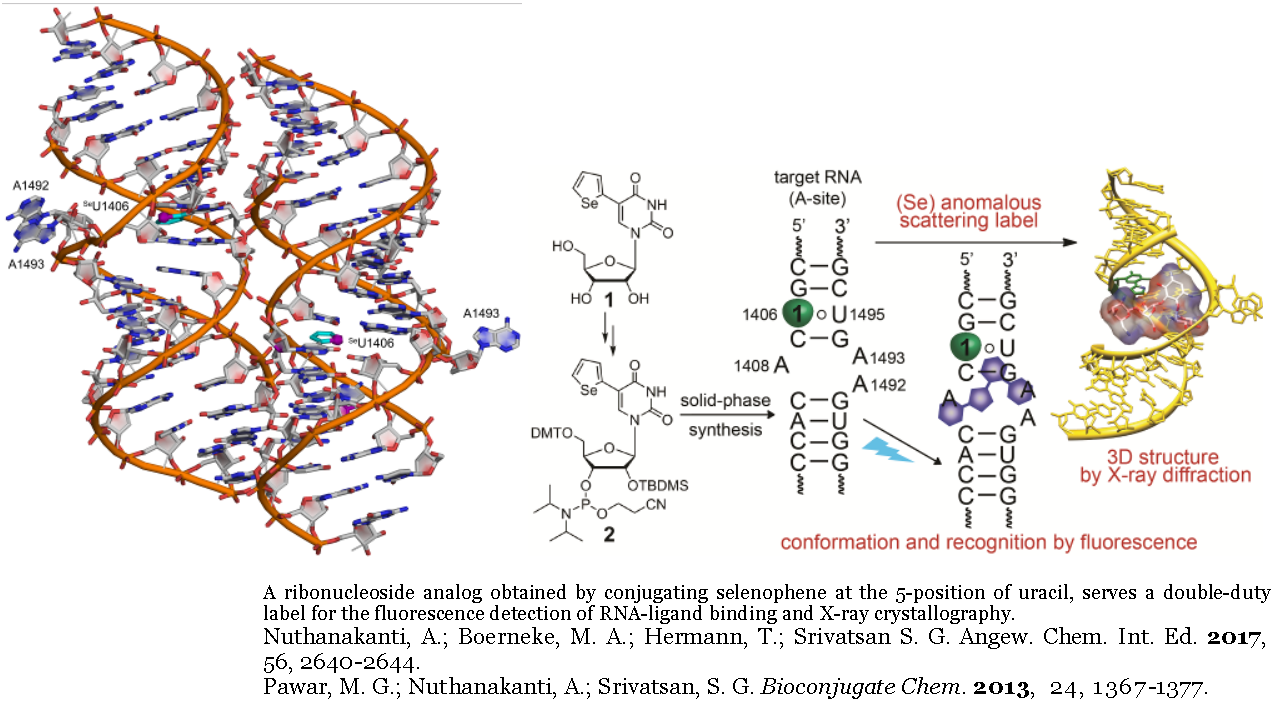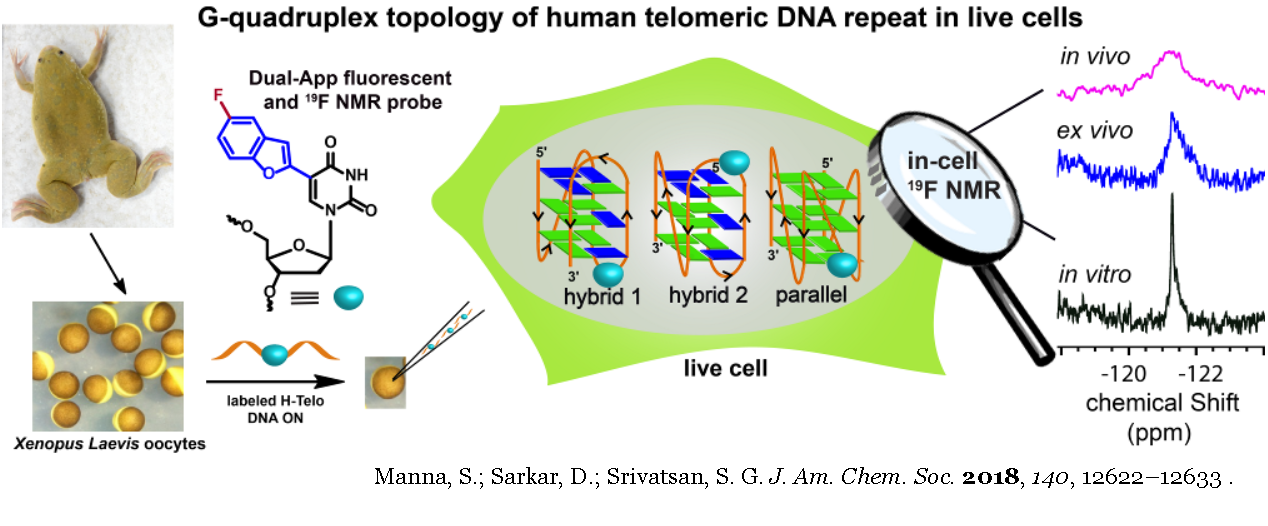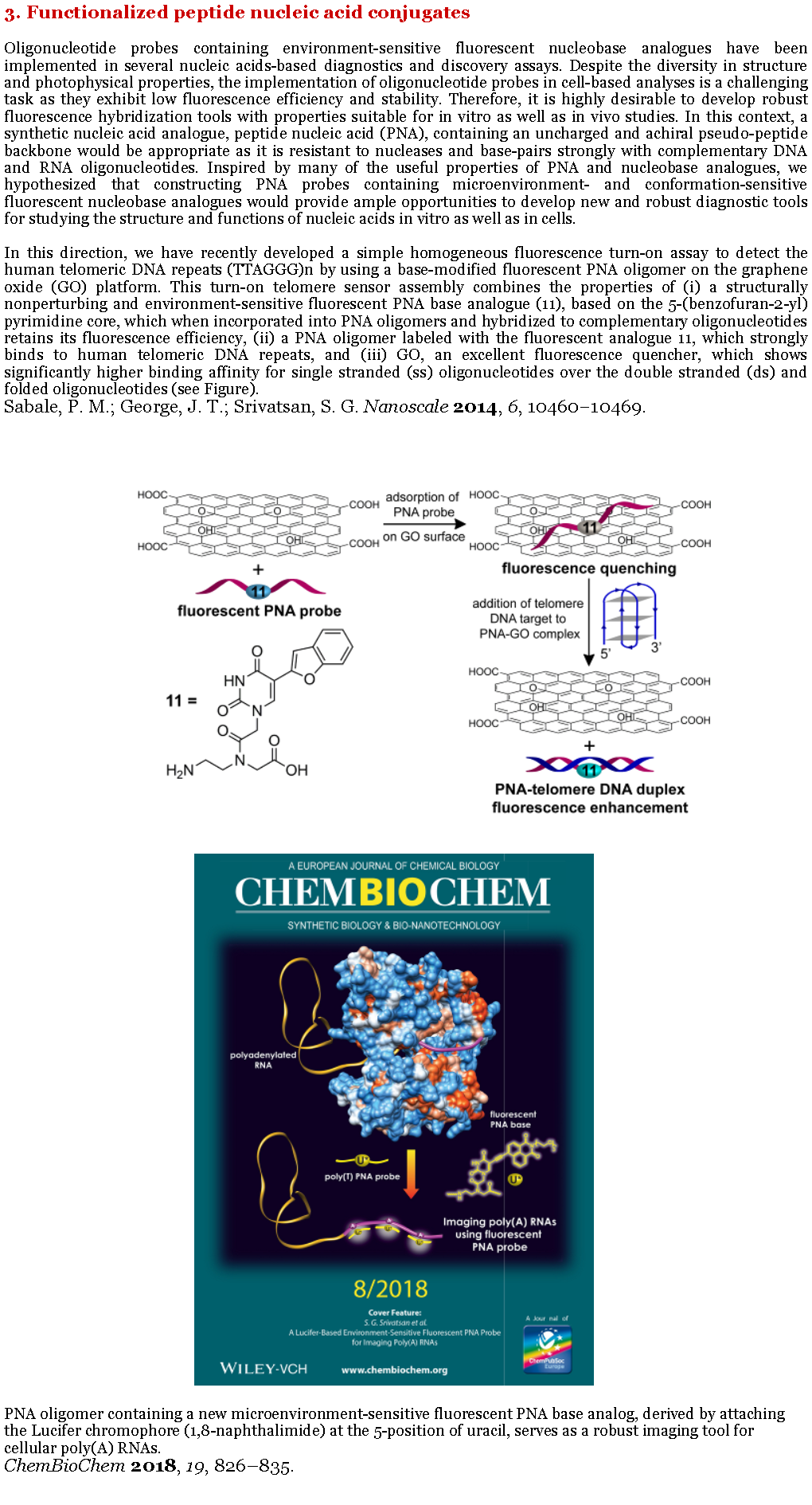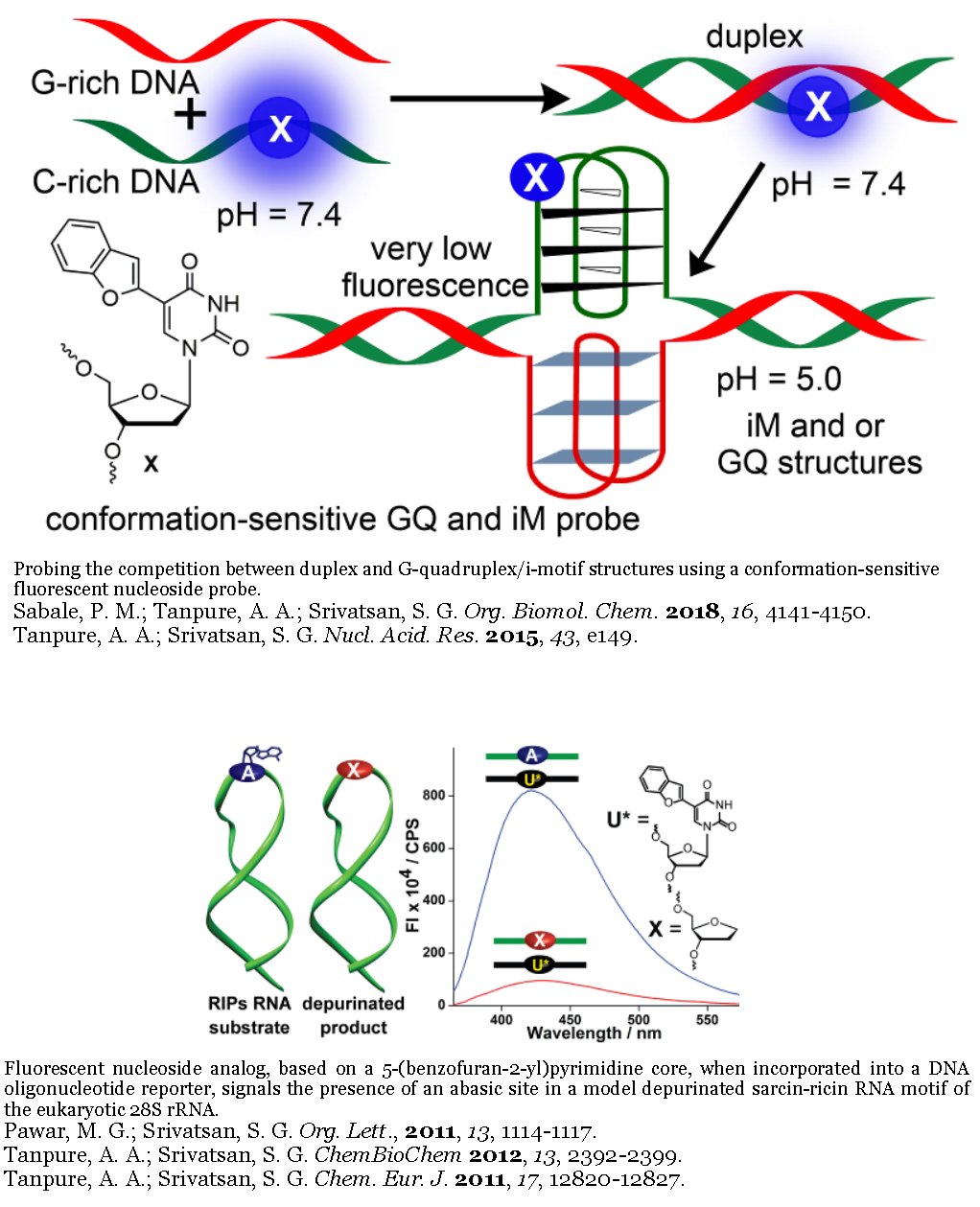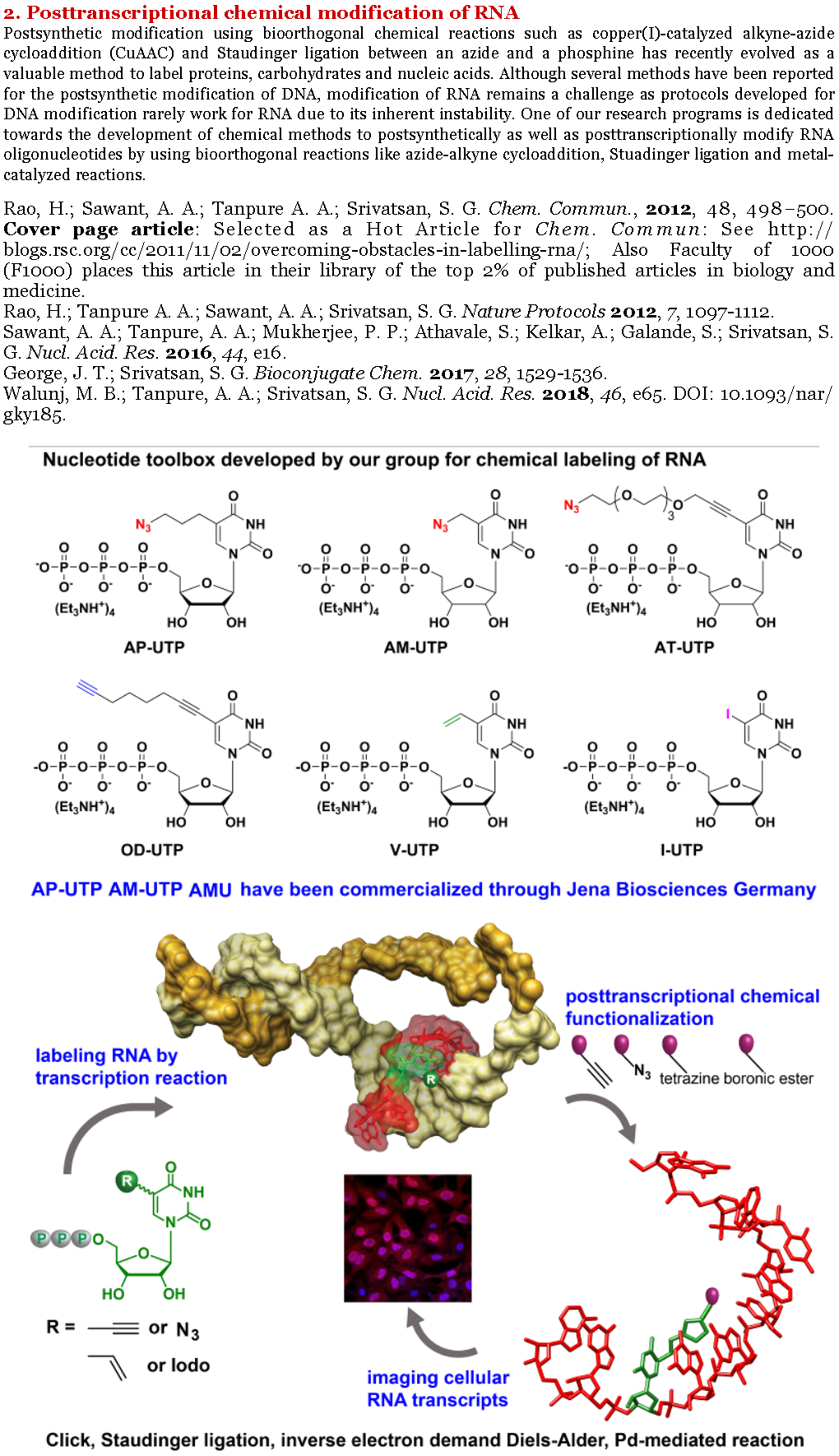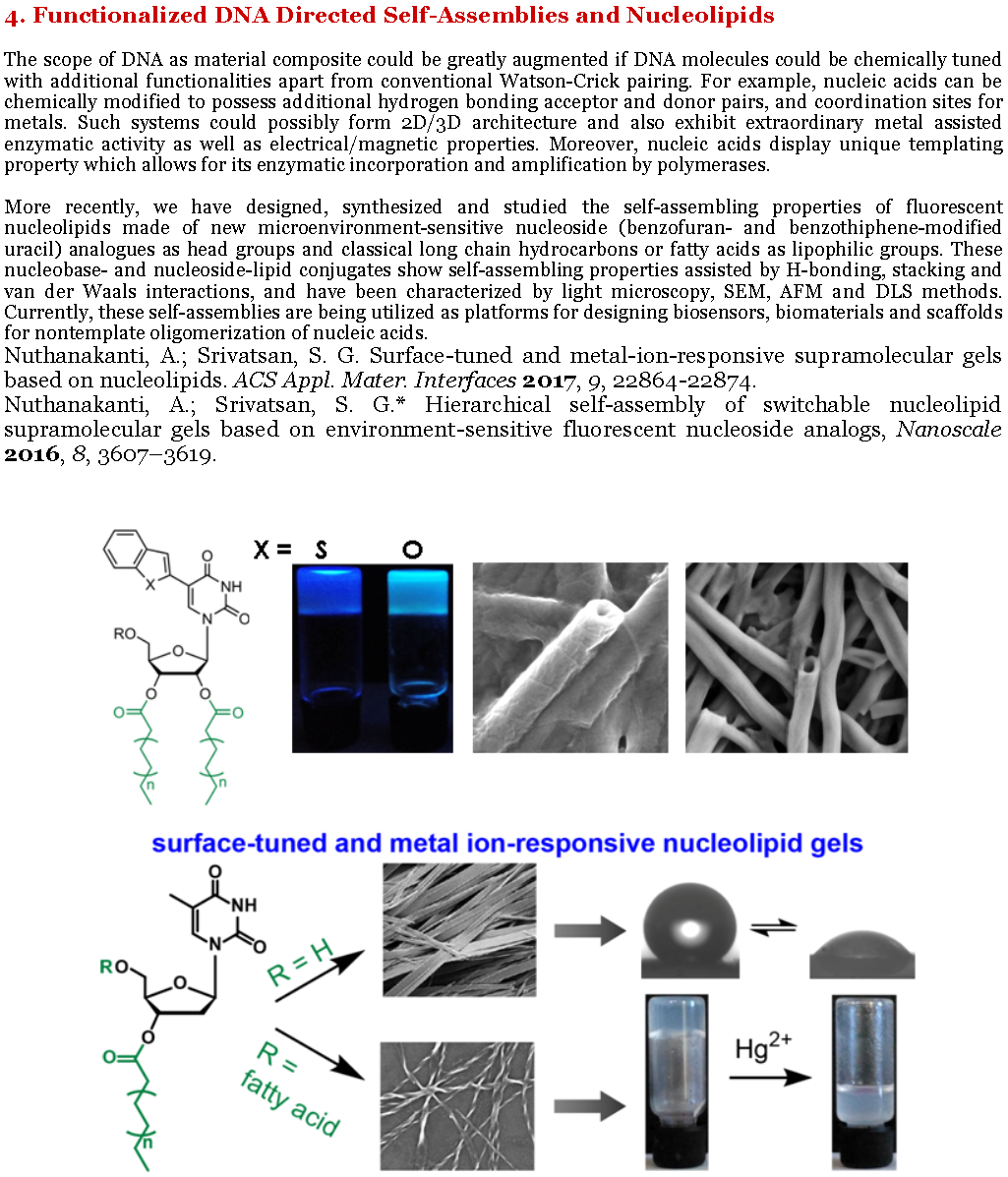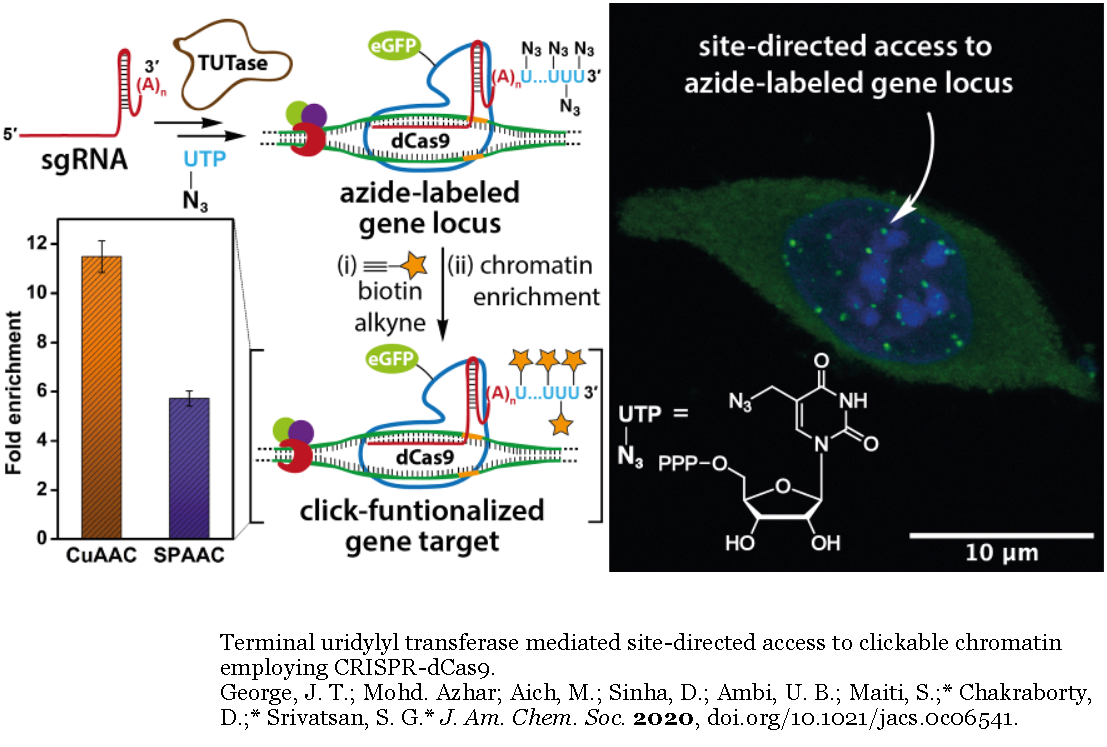|
Indian Institute of Science Education and Research |

|
Research |
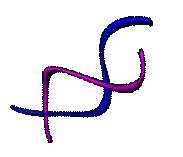
|
Srivatsan Group |
|
Research
We use physical organic concepts to develop tools to assess structure, dynamics and function of nucleic acids in cell-free and complex cellular environments. In this direction, we have initiated two research programs. One involves the development of minimally perturbing and conformation-sensitive multi-app nucleoside probes for studying nucleic acids in real time by fluorescence, in 3D by X-ray crystallography and in cells by NMR. In the second program, we establish methods to label nucleic acids with variety of functionalities by using bioorthogonal chemistry like click and metal-catalyzed reactions. In parallel, we are also interested in developing multifunctional nucleolipid conjugates that self-assemble into nanofibres, nanotubes and gels. These assemblies show aggregation-induced fluorescence, self-sorting behavior and surface-switchable properties. Our research is multidisciplinary in nature involving synthetic organic chemistry, biophysics, molecular, cell and structural biology.
Specific Areas
1. Functionalized Nucleoside Probes Several nucleic acid motifs that regulate enzyme activity and interact with viral proteins as well as small molecules are being vigorously investigated as potential therapeutic targets. Consequently, numerous tools have been developed to advance the understanding of protein- and ligand-nucleic acid interactions and the discovery of potential inhibitors. In particular, nucleosides analog probes that are sensitive to their local environment have become powerful tools for investigating nucleic acids (Tanpure, A. A.; Pawar, M. G.; Srivatsan, S. G. Isr. J. Chem. 2013, 53, 366-378.). We have developed several structurally non-perturbing and conformation-sensitive fluorescent nucleoside analogue probes for studying nucleic acid structure, dynamics and recognition properties. We use simple physical organic concepts to design and synthesize the nucleoside probes. Some of the analogues, which we have developed, are highly sensitive to conformational changes. We have utilized them in developing fluorescence assays to (i) detect abasic sites (depurinated site) in DNA and RNA, (ii) monitor RNA-drug binding and (iii) study oligonucleotide dynamics in cell-like confined environment. Currently, we are developing multifunction nucleoside probes, which could be used to study the structure and function of nucleic acid motifs simultaneously by using fluorescence and NMR and X-ray crystallography techniques. Some of the examples are shown below. |
